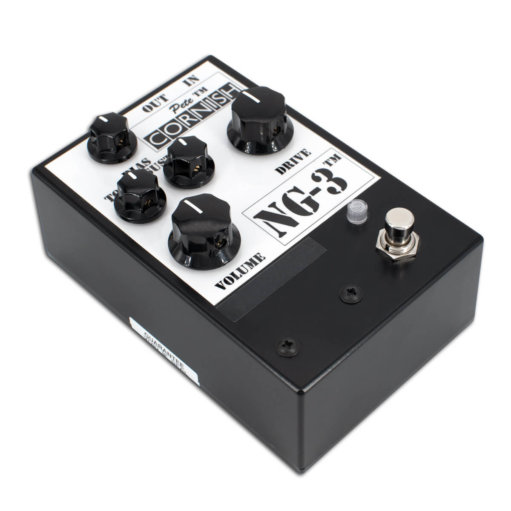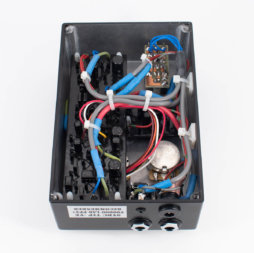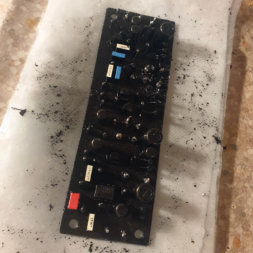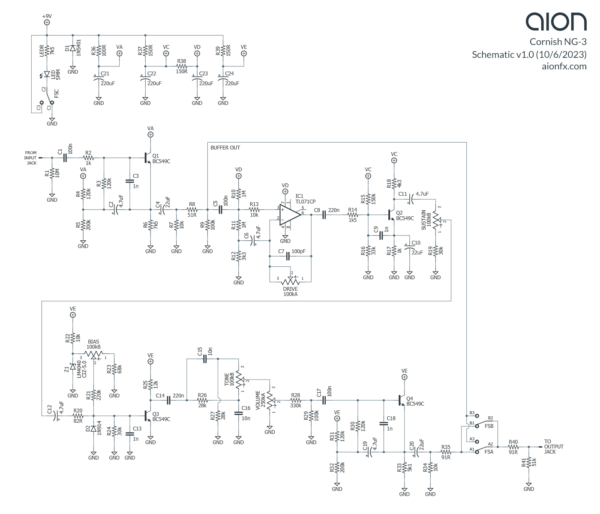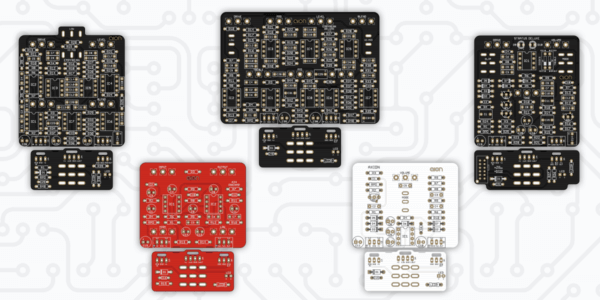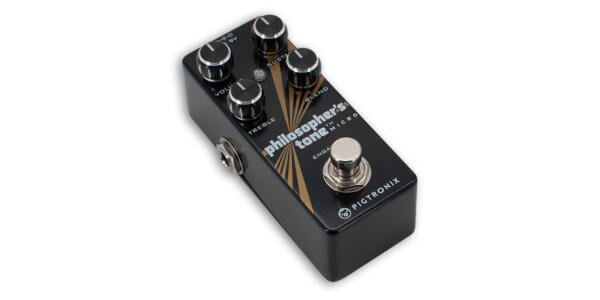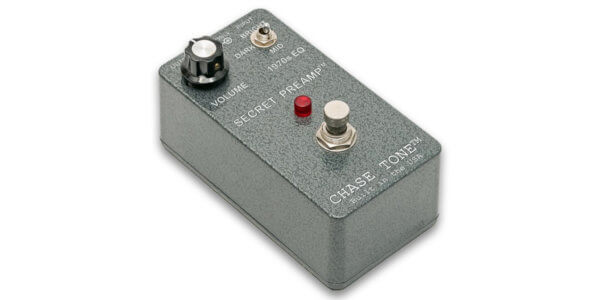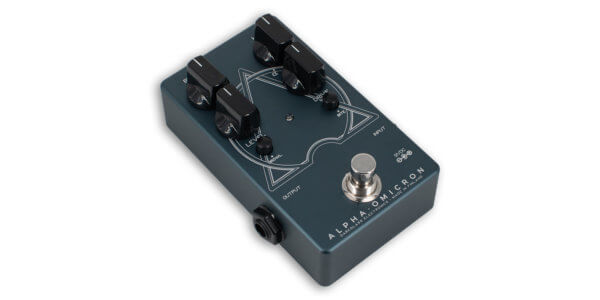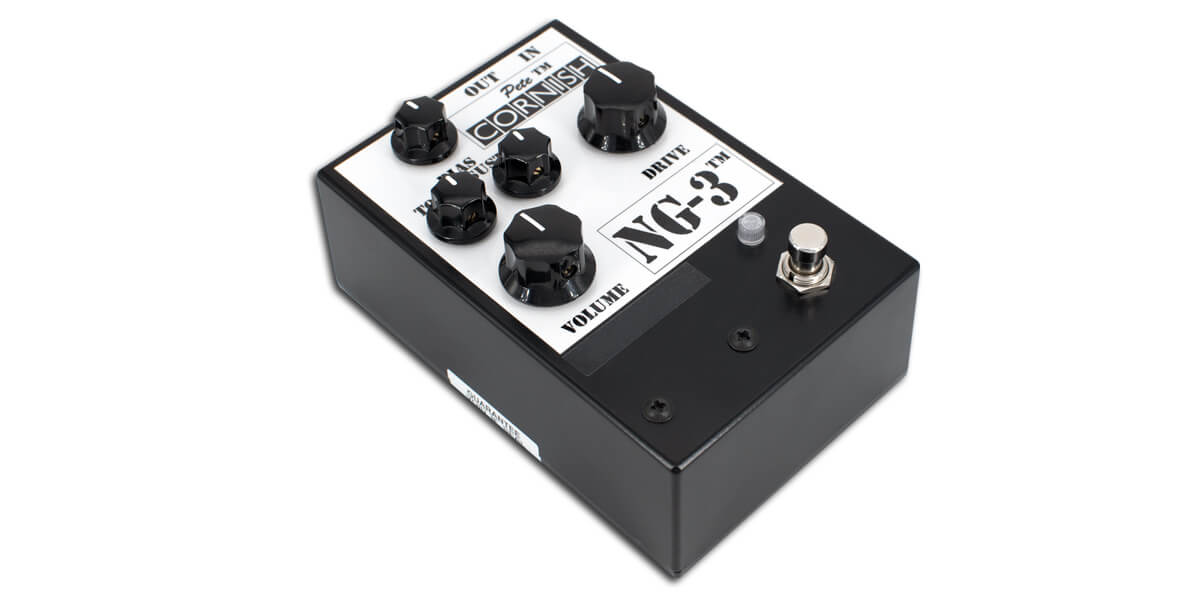
Tracing Journal: Cornish NG-3
Today we’re releasing new traces of three Cornish pedals. First up is the NG-3, a variable-bias silicon fuzz that can go from class A (typical smooth fuzz tone) through class B (gated fuzz) to class C (“velcro” sound with only the peaks of the signal being amplified). It was designed to emulate “imminent amp death”, the sound of a blown power tube or output transformer right before it all goes up in smoke.
Here’s a great demo from Shnobel Tone showing what it can do:
There’s plenty to talk about with this one, but before we get into the technical details, some history.
Origins: The N.G. Fuzz
The NG-3 has a fairly detailed history that dates back to the late 1990s. According to Pete Cornish’s Clients page, the first appearance of a unit called the “N.G. Fuzz” was one that was made in 1998 for Yukihiro Hayashi, who later founded the Japanese pedal company Free the Tone in 2002 and was a friend of Pete Cornish.[1] The second unit was sent to Lou Reed in 1999, who would get at least five units in total. Kevin Shields of My Bloody Valentine also received one in 2003.
NG-2
The NG-2 was first added to the website’s product list in early 2004, replacing the N.G. Fuzz.[2] The first high-profile sale recorded on the client list was 2007, and a unit was sent to Lou Reed in 2010. The NG-2 is perhaps best known for being used by John Mayer on his version of Crossroads in 2009.[3]
It’s not known if there are any circuit differences between the N.G. Fuzz and NG-2. The website descriptions are identical. It’s possible it was just a change to the cosmetics or PCB layout, and that it was renamed for consistency with the P-2, G-2 and SS-2.
The NG-2 was traced by PedalPCB and released as the Nugget project in 2018. We’ll come back to this in a bit.
NG-3
The NG-3 was released in 2010. Pete shares the backstory:
When I supplied the first NG-2 to Lou Reed I mentioned that there was an internal bias control that I set during testing. Lou asked if this could be made external so that he could adjust it to find other possibilities. As this was very successful I decided to add the Bias control as a user adjustable control and hence called the pedal the NG-3 to differentiate it from earlier versions. There is no audio difference between the NG-2 and NG-3 just the possibility of user adjustable Bias control.[4]
According to the above quote, it would seem that the only difference was that the bias trimmer was made into an external knob. (This had previously been available as a modification for the NG-2, but the NG-2 PCB was not designed with this as a standard feature.) Initially, the NG-3 fully replaced the NG-2, but in 2017 he brought back the NG-2 as a standard product offering.
So, this is where it gets interesting: We traced a NG-3, and it’s nothing like the Nugget schematic.
Tracing photos
Yes, that’s an op-amp… so right away we can tell that there will be some surprises compared to the Nugget.
Schematic
Nugget vs. NG-3
Broadly speaking, the NG-3 and Nugget both fit the descriptions on Pete’s website. The first stage is a clean boost with adjustable gain. The second stage is capable of being overloaded by the first at higher gain settings. The third stage is a silicon fuzz that has a variable bias.
But beyond the basic similarities in function, each of these three stages is drastically different between the two pedals, as is the tone stack that comes afterward. The two circuits have nothing in common, even the buffers—the NG-3 has the standard Cornish buffers while the Nugget is unbuffered. This is a long way from just moving the bias control to the outside. Here’s a comparison of each of the stages:
- Stage 1: In the Nugget, this is a basic transistor boost, very similar to the gain recovery stage of a Big Muff immediately before the output volume control. In the NG-3, it’s an op-amp gain stage very similar to the second op-amp stage of the SS-3 that drives the hard clipping.
- Stage 2: In the Nugget, it’s a Big Muff-style clipping stage with germanium diodes in the feedback path, similar to the G-2. In the NG-3, it’s a more basic transistor gain stage with an emitter bypass capacitor and a 1nF capacitor from base to emitter.
- Stage 3: In the Nugget, it’s a silicon Fuzz Face with a trimmer to set the bias of the first transistor. There’s also a single diode in series with the input, which adds distortion and blocks half the signal if it’s below a certain threshold. In the NG-3, it’s a single-transistor stage very similar to the previous stage, but set for much higher gain. The base bias is set by a 5V precision zener diode and a potentiometer, and instead of a series diode at the input, there’s a single diode going to ground, which will clip half of the waveform if it’s above 0.7V.
- Tone: In the Nugget, it’s a simple treble-cut control similar to the one found on the G-2 and SS-3. In the NG-3, it’s a full bass/treble balance control, the same as the one found in a Big Muff, but tuned for different frequencies.
Analysis
So we have Pete Cornish saying the NG-3 is identical to the NG-2 but with an external bias control. We also have a schematic of a NG-2 that indicates it’s nothing like the NG-3. Both can’t be true, so how do we make sense of it?
There’s another piece of evidence to submit into the record. Someone took photos of the inside one of Lou Reed’s N.G. Fuzz units, one of the three black ones he received in 2003, and posted them to The Gear Page in 2021. The main board is painted over (Pete’s “light goop” method, as opposed to the “heavy goop” epoxy block of the CC-1 and OC-1) but the op-amp is clearly visible in a couple of the photos.[5]
So based on this, it’s hard to believe Pete used an op-amp in both the N.G. Fuzz and the NG-3, but the NG-2 in the middle is a completely different design. Pete has indicated that the NG fuzzes are basically the same. In his other pedal with both a “2” and 3″ version, the SS-2/SS-3, the circuit is the same but for one knob. Pete’s not shy about releasing similar circuits as entirely new products, as in the P-2/G-2 and CC-1/GC-1, so a redesign this extensive would surely have been accompanied by more fanfare.
One last (admittedly small) piece of evidence: on the price list, the NG-2 is listed as “FUZZ+ WITH B/T SINGLE TONE CONTROL” and the NG-3 is listed as “FUZZ + WITH B/T SINGLE TONE AND BIAS CONTROLS”. The “B/T tone control” clearly refers to the Big Muff style that pans between bass and treble. As mentioned before, the Nugget has a hi-cut control, and it would be a stretch for Pete to say this type of tone control affects bass frequencies. It’s a textbook low-pass filter, which by definition leaves the low frequencies untouched.
Conclusions
To be clear, we don’t believe the Nugget is fake, as it does follow Pete’s design style and each of the four stages has similarities to other pedals in his lineup. However, we would conclude that it does not represent a standard-production NG-2. It could have been a prototype of some sort, and possibly part of an integrated rig (which would explain the missing buffers).
The only unresolved question is regarding germanium. The Nugget has germanium clipping diodes in the second stage, and Pete mentions in the NG-2 description that the second stage is a “stabilized ‘Germanium’ preamp”. The NG-3 description omits the detail about germanium and just calls it a “stabilized discrete preamp”.
It’s not really fair to call a gain stage with germanium clipping diodes a germanium preamp, but Pete is given to flowery exaggerations at times, and if it’s only the diodes then it would not be his most egregious. Whatever the case, this does seem to indicate that the real NG-2 has more differences from the NG-3 than just the external bias. (However, some of Pete’s product descriptions do contain outright falsehoods, so anything is possible.)
Despite this question, the balance of the evidence leans heavily toward the Nugget being something other than a production NG-2. It’s still well worth your time, and is an interesting entry in the Cornish encyclopedia, which is growing more and more complete by the day.
But, we’re still left with some unsolved questions about the NG-2. The only internal photos we’ve seen are these, posted to FSB in 2008. The PCB layout is pretty similar to the NG-2, but not identical, and unfortunately the exact place where the IC would be located is completely obscured by a bundle of wires in all of the photos.
There’s nothing in the visible portion that would preempt the possibility of an op-amp, but as of right now the NG-2’s op-amp is unconfirmed. If anyone has a better photo, please send it over and we’ll update the article.
Nysiad Silicon Fuzz
![]() Releasing today is our adaptation of the Cornish NG-3, called the Nysiad Silicon Fuzz. It’s a direct clone of the original Cornish pedal based on our trace, with the one addition that buffered bypass can be changed to true bypass with a slide switch, as on our other Cornish adaptations.
Releasing today is our adaptation of the Cornish NG-3, called the Nysiad Silicon Fuzz. It’s a direct clone of the original Cornish pedal based on our trace, with the one addition that buffered bypass can be changed to true bypass with a slide switch, as on our other Cornish adaptations.
Disclaimer: Aion FX is in no way affiliated with Pete Cornish. Any trademarks are property of their owners and are used for comparative purposes only.
Notes & references
- According to FTT’s About page, Pete and Lynda Cornish actually came up with the company name “Free the Tone”. You can see another reference from Pete on this page about one of Lou Reed’s rigs. ↩
- Pedals list, February 6, 2004 via Wayback Machine. The previous capture in December 2003 shows the “NG Fuzz” instead. ↩
- According to this Music Radar interview from 2010. There’s no record of John Mayer on Cornish’s clients list, but based on that interview and this video from 2008, he definitely owns one. It may have been purchased anonymously or through a third party. ↩
- Quoted from an email exchange with Pete posted on thefretboard.co.uk in 2017. ↩
- There’s also another N.G. Fuzz that was posted to FSB in 2008 showing the same basic internal layout, but without the paint. ↩
